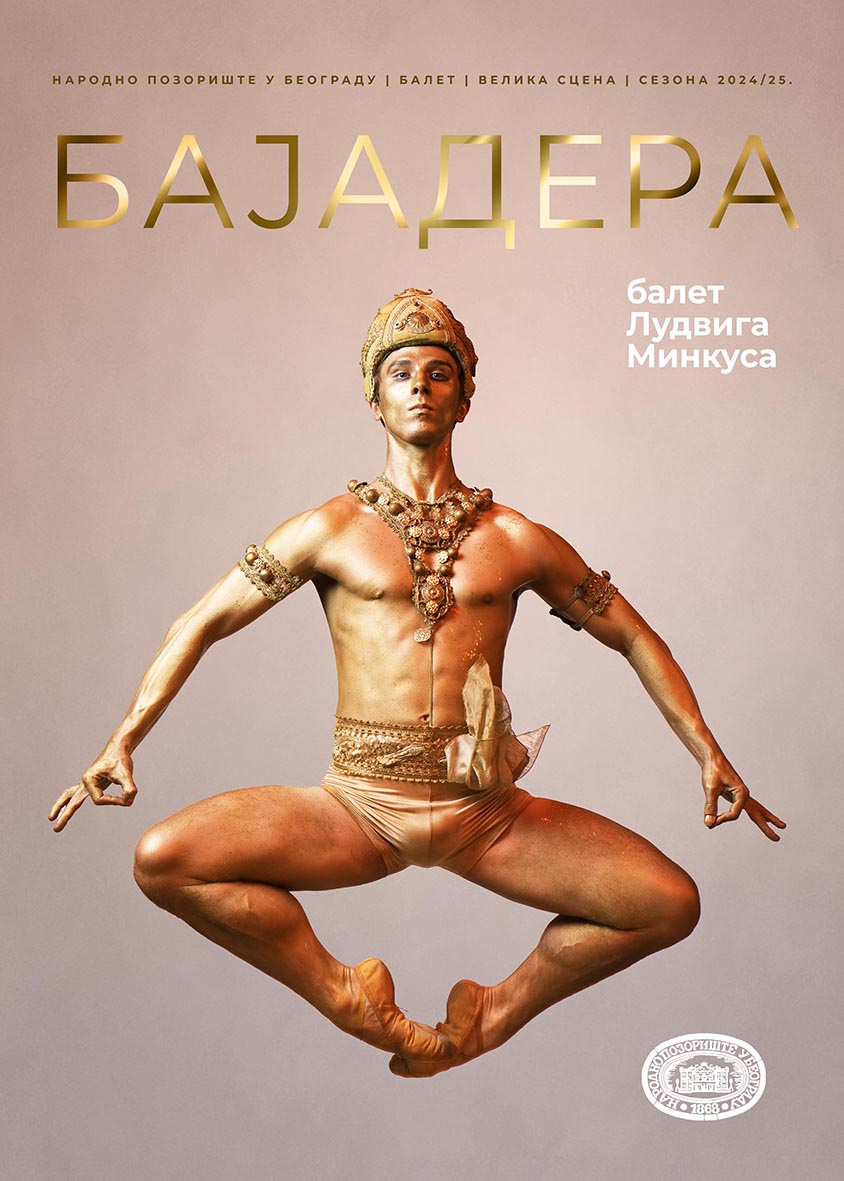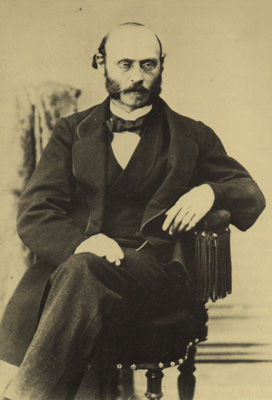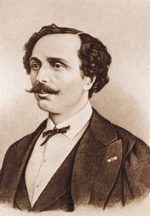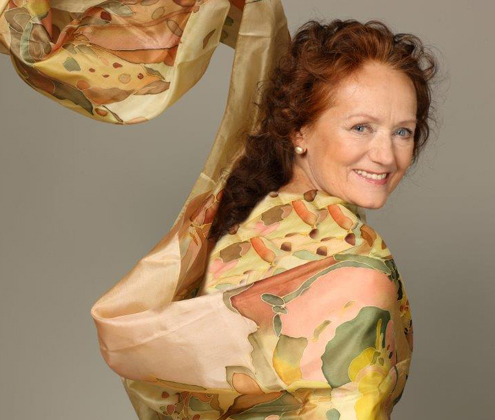La bayadere
ballet by Ludwig Minkus

A VOYAGE TO INDIA
A travel diary by Pierre Sonnerat dating from 1782 is one of the earliest documents that gives account of bayaderes , dancers in Indian temples especially in the area of Surat. The expression bayadere comes from Portuguese – Bailadeiras, which means dancers. Bayaderes were famous for their dancing and singing in sacral processions to honour gods. Girls used to devote themselves to this profession in early age, before getting married. They were trained to dance from the moment they entered into the service of Brahmins, the high priests in Indian pagodas. The profession of a bayadere was highly esteemed and popular at the time in India.
THE MYTH OF A BAYADERE
The ballet can also be called The Voyage through Ancient India or The Romantic Myth of Bayaderes. Distant colourful culture offers a fantastic ideal of a female musician, dancer and seductress in a far away and exotic religion. It is no wonder that it was the nineteenth century India that offered a perfect background for a romantic myth of beautiful and emancipated young women, who did not deprive men of their beauty, as opposed to inaccessible women belonging to high castes. The most interesting part of it was that it was all in full concordance with ancient traditions and religious canons. Is not that the male dream, eternal, essential and humane? The nineteenth century Paris, which yearned for moral liberation, imagined India as a land of numerous kingdoms of fakirs, ascetics, maharajas and tigers, as well as a land of lavish palaces and pagodas and, most of all, the place of origin of bayaderes. The very word “bayadere” introduced turmoil and stirred up the spirits. There were numerous travellers, novelists and librettists who spoke of their “lascivious dance to strange and doleful music, danced in palaces as in legends…” In 1830, Victor Jacquemont boldly stated that the dance of bayaderes surpasses arabesques of Paris Opera ballerinas by far, “I still do not fully understand Indian culture, but I perceive their dance as the most attractive and most seductive in the world.” In fact, fascination with this romantic character comes from her destiny of a divine courtesan, or to the same extent, from her role of a slave to gods. “We want to see bayaderes”, could be heard in all cultural circles. Some of greatest minds of the time have been inspired by the touching myth of their slavery, for instance, Goethe wrote a poem Der Gott und die Bajadere. The influence could be noted in the world of music and opera. Imaginary Orient with its fantastic themes about demons and wonders of pleasure and barbarism has become the cliché in operatic librettos (Bayadères, Catel (1810), Lakmé, Léo Delibes (1883), Lalla Roukh, Félicien David (1862). Extravagance of strange princess who wear precious stones or a tyranny of Brahmins over under-privileged people or provocative dances of bayaderes in temples, together with new scientific disciplines studying Orient, scientists focusing on tremendous and new studies on India, all gave quite a fresh background to creation of scenic and music pieces. When the touring company of authentic Indian Bayaderes visited Paris, with famous Amani as a principal dancer, Théophile Gautier, a ballet librettist and “a magician of perfect French language” (called so by Charles Baudelaire, edit.) wrote some of his most inspired pages and stated, “In our minds, even the very word Bayadere inspires an idea of sun, scents and beauty, ancient and human… Dance of girls, who come from the place of pilgrimage dedicated to God Vishnu, their romantic features and exotic beauty, united with strength and pure blood, have been unknown to our civilisation. This was a moment of unforgettable magic…” One of first attempts to reincarnate the spirit of India on a European stage was an opera and ballet by Francois Auber titled Le dieu et la Bayadère (The God and the Bayadère) in 1830. The production was created for ballerina Marie Taglioni, choreographed by her father Filippo Taglioni, and had been performed in Paris Opera for a long time. Gautier wrote a libretto for ballet Sacountala in 1849, based on the work of Indian poet Kalidasa from the fourth century; Sacountala is about a famous dancer of the same name from a forgotten Indian temple. This pantomimic ballet had a tremendous success; it was created to the music of Ernest Reyer and choreographed by Lucien Petipa, Marius Petipa’s older brother. Together with many other superb ballets of the time, it vanished from the repertoire when the new creations appeared. However, 20 years later in Sankt Petersburg, as an echo of the success, Marius Petipa started working on the ballet Bayaderka (in Russian, La Bayadère in French) with same characters as in his brother’s piece: Rajah Dugmanta, ruler of India and Gamzatti, his daughter. Bayaderka, a ballet by Marius Petipa (1877) is considered an original piece, although the most of innovations have been introduced in regards of western conventions…”Music is conditioned with many adjustments to historic context of the ballet. Minkus uses wind and percussion instruments as a “spice” to give exotic colour and sometimes uses several rhythms. What would have happened if he had to preserve the original musical instruments; there would be three hours of academic ballet with instruments from India? Marius Petipa’s ballet is actually a grand spectacle of western civilization’s art, where a choreographer expressed his sense for melodrama… Ekaterina Vazem has been so inspired, her art had no limit, her perfection was so superb that words cannot do her justice… Petipa’s great talent was that he knew what the audiences needed to see and the way they understand things. La Bayadère represents a successful union between artistic creation and audience’s expectations”. (Roland John Wiley, London)
Miloš Dujaković
 LUDWIG MINKUS
LUDWIG MINKUS
Ludwig (Leon) Minkus, a ballet composer and a violinist, was born in Vienna in 1826. He started his career in 1846 in Paris by composing Paquita together with Edward Deldevez. The piece was produced in cooperation with a choreographer Joseph Mazilier. He also cooperated with choreographer Saint-Leon; together they produced ballets La Fiammetta (1846) and Nemea (1864). Subsequently, he worked with a French composer Delibes on the ballet La Source and composed music for another two ballets with Saint-Leon: Le Poisson d’Or and Le Lys. He moved to Russia in 1853 and became a conductor of Prince Yusupov’s orchestra in St. Petersburg. He appeared as a soloist in the Orchestra of the Bolshoi Theatre from 1861-1872. At that period, he also taught at the Moscow Conservatory (1866-1872) and he was appointed the official composer of the Bolshoi Ballet (1864-1871). In 1871, he moved back to St. Petersburg and worked there until he retired in 1891. Dissatisfied with his low income he left Russia and moved to Austria where he died at the age of 91 (1917).
He composed more than 20 ballets including: Don Quixote, Paquita, La Bayadere, Roxana, Camargo, Bandits and Papillons. As a master of his trade, Minkus was well acquainted with the different styles of ballet music of his time. His music is melodious and pleasing in sound, with clear dance rhythms.
 MARIUS PETIPA
MARIUS PETIPA
Marius Petipa is one of the best known personalities of the ballet art of all times. He is the author of the classical ballet academism, a ballet style which delights audience and ballet artists with its strict, yet beautiful and virtuosic forms. Marius Petipa was born in Marseilles, in 1819. in an artistic family. Petipa started his career as a dancer, first in France, then Spain, and in 1847 he came to Russia where he stayed till his death, in 1910. At the stage of the Marynski Theatre in St.Peterburg he worked for 56 years, first as a dancer and then as a choreographer. He staged forty six original ballets, synthesizing the achievements of the ballet art of the 19th century, which he enriched with extraordinary creative imagination. His most famous ballets are: Don Quixote(1869) and La Bayadere by Ludwig Minkus, than The Sleeping Beauty (1890) and Swan Lake (1895) by P.I.Tchaikovsky, in collaboration with Lev Ivanov, and Reymonda by A.K.Glazounov. Petipa took part in creating the ballet The Nutcracker by Tchaikovsky and Ivanov, for which he wrote libretto based on a well-known Hoffmann’s tale. Even the superficial insight into his stagings which are kept till today, brings us to the conclusion that the soloists’ sections and great classical duets are the most precious legacy that Petipa left for future generations of ballet artists. The fact is that the classical ballet is considered to be the basis of the versatile dancing education, and that the most valuable classical ballets and parts of them represent the framework of the repertoire of ballet companies throughout the world. Spectators, of course depending on the technical abilities of dancers, are always looking forward to watching them. It is clear that creative opus of Marius Petipa is of utmost importance in that.
 GABRIELA KOMLEVA
GABRIELA KOMLEVA
The legend of St. Petersburg stage, Gabriela Komleva, has finished her education at the Vaganov Academy at the St. Petersburg Conservatory with highest distinction. She was a Prima Ballerina of Kirovski Ballet, Mariinsky Theatre, in period between 1957 and 1988. She has performed the academic repertoire with great success and earned the title of Ballerina Petipa. Komleva has prepared her roles under guidance of Natalia Dudinskaya and other renowned ballet masters, such as E. Lyk, B. Shavrov, G. Ulanova and K. Sergeyev. Komleva has danced in numerous creations by Russian choreographers. In the renowned Russian Ballet Encyclopaedia, she is said to have “paved the new path in performance of modern pieces. Hers is a talent which shows generous academism, musicality, dramatic virtuosity and remarkable technique.” Since 1979, she has worked as a ballet master and a repetiteur with the Kirov Ballet (Mariinsky), with both Russian and international ballet stars. She has danced in numerous broadcasts of classical ballets in Russia and abroad. In addition, several films were made about her. Since 1987, she has been teaching at the Ballet Master and Repetiteur Department at the St. Petersburg Conservatory, where she is given a title of professor and later, in 2009, she becomes the Head of the Department. Amongst her numerous awards, the most important ones are: National Artist of the USSR, Renowned Artist of Dagestan, Winner of Russian National Award “M. Glinka” and awards from many Russian and international competitions. She has also won The Best Artist of the Year Award, The Best Artist in TV Films Award, The Best Repetiteur Award, The Best Ballet Master Award, etc. The International Biographical Institute has given her the title of Woman of the Year on several occasions. In 1994, she becomes a Chairing Person of the Society for Preservation of Russian Classical Ballet Style in England. Of perhaps all the classics in Komleva’s career, it was her interpretation of Nikiya in La Bayadere which showed her qualities to their utmost. In 1979, BBC chose the version of La Bayadere, with Komleva in the leading role, the best musical film of the year. After a performance dedicated to the hundredth anniversary of the first performance of La Bayadere (1977), in which Komleva danced Nikiya’s role, the great Russian ballerina Tamara Karsavina sent her a card, “La Bayadere – a unique and unsurpassed ballet; I know that the grand tradition of Russian ballet school is carefully preserved in a city I cherish in my memories”.
ELA BAYADÈRE , FROM A ROMANTIC BALLET TO TODAY
1877 Marius Petipa, a dancer and a choreographer, is the author of the whole spectacle, as a librettist and a choreographer. The ballet in four acts and seven tableaux has premiered on 23 January 1877 at the Imperial Bolshoi Kamenny Theatre in St. Petersburg. Main roles were danced by Ekaterina Vazem as Nikiya, Lav Ivanov as Solor and Maria Gorshenkova as Gamzatti. Originally, the ballet consisted of four acts. Due to demanding technical challenges regarding very complicated machinery required for the scene The Wrath of the Gods (destruction of the temple) in Act IV, the scene has been omitted later. The Betrothal Celebrations scene in the second act has been impressive with more than 230 dancers on the stage. In the original ballet, there was no duet between Nikiya and Solor in the first act, solo of Golden Idol in the second act and Solor’s variations in the third act. Solor danced only in Coda – the final dance.
1884 With her 70th performance as Nikiya, Ekaterina Vazem, a prima ballerina of the Imperial Theatre, has said farewell to audience and stage. Her successor was Anna Johansson.
1900 Mariinski Theatre revives La Bayadère for the occasion of Imperial Ballet’s Premier Danseur Pavel Gerdt’s fortieth year of artistic activity, in which he danced Solor’s part in his 56th year of age. In the production, Nikolai Legat performed variation in Gerdt’s place; he introduced a variation from Le Papillon, also choreographed by Petipa to Minkus’ music, which will be changed later by Chabukiani. Prima Ballerina Assoluta Mathilde Kschessinskaya danced Nikiya’s role and the Prima Ballerina Olga Preobrajenskaya danced the role of Gamzatti. For the revival, Petipa shortened some music parts, but he increased the number of Shades in the third act from 32 to 48 and he changed the venue to mystical and shady image of a mountain instead of a shining palace.
1902 At the age of 21, Anna Pavlova danced Nikiya’s part for the first time. In The Kingdom of the Shades scene she introduced new and different poetics and spirituality to the character.
1903 The great Choreographer, Marius Petipa retires and leaves the Mariinski Theatre.
1904 La Bayadère is on the repertoire of the Bolshoi Theatre in Moscow, choreographed by Alexander Gorsky.
1917 The new production of La Bayadère in the Bolshoi Theatre in revised choreography by Alexander Gorsky and Vasily Tikhomirov. The production will be performed 126 times, until 1936.
1923 On request by Gorsky, Boris Asafiev creates new orchestration of certain parts of Minkus’s music score.
1930 Marina Semyonova leaves the Mariinski Theatre and transfers to the Bolshoi Theatre where she has a debut in La Bayadère .
1932 Agrippina Vaganova revives the ballet again in the Kirov (former Imperial Mariinski) Ballet after retiring from the stage and dedicating herself to pedagogy.
1941 Vakhtang Chabukiani and Vladimir Ponomarev produce one of the most significant revivals of the ballet. The fourth act, which comprised of two scenes, Pas d’Action and The Wrath of the Gods, disappears forever. Pas d’Action scene is transferred into the second act and is often referred to as Grand Pas or Pas de Six, a dance for six dancers. Chabukiani choreographed a new variation of Solor for himself in the role; the variation was introduced earlier from Le Papillon ballet; while Ponomarev choreographed new variation of Gamzatti. Chabukiani added a duet of Solor and Nikiya in Act I. He also added a scene of Solor’s awakening after The Shades scene, which was omitted soon after that and the ballet ends with The Shades. This version is still being performed in the Mariinski Theatre. In 1930s, Nikolai Zubkovsky added a variation of The Dance of the Golden Idol in Act II, which became traditional and in 1950s, Konstantin Sergeyev created the Pas de Deux of Nikiya and the slave; the duet was created for his wife Natalia Dudinskaya.
1943 The Bolshoi Theatre produces a new version of La Bayadère , choreographed by Smoltsov-Kudryatseva for Marina Semyonova. The production will remain on the repertoire for a short time. Only in 1992 will the Russian audience be able to see the new revival produced by Yuri Grigorovich.
1958 At the request of Natalia Dudinskaya, Rudolf Nureyev (at the age of 20 at the time) dances with Olga Moiseyeva in La Bayadère .
1961 The Kirov Ballet (Mariinski) on tour in Paris, performs the whole act The Kingdom of Shades from La Bayadère with Nureyev in the role of Solor.
1962 Following this example, the Bolshoi Theatre has revived Act III – The Kingdom of Shades, solely for their tour in USA. The revival was made with assistance of ballet masters from St. Petersburg, Olga Iordan and Fiodor Lopukhov after the original version of M. Petipa. They kept Chabukiani’s variation of Solor. Maya Plisetskaya and Nikolai Fadeychev danced in the New York’s performance.
1963 Rudolf Nureyev produces The Kingdom of Shades with 24 ballerinas instead of 32. This was the first production of the ballet in the West. The same version will be produced in 1974 in the Paris Opera with 32 Shades. Nureyev danced with Margot Fonteyn in London and Noel Pontua in Paris.
1974 After her departure from the USSR, Natalia Makarova, a former principal dancer of the Mariinski (Kirov) Theatre, produces The Kingdom of Shades in the American Ballet Theatre, New York, with Cynthia Gregory and Ivan Nagy in leading roles.
1977 The first filming of La Bayadère performed by the Kirov Ballet, version of Ponomarev/Chabukiani from 1941. Gabriela Komleva as Nikiya, Tatyana Terehova as Gamzatti and Reyen Abdeyev as Solor played main roles. DVD version of the production was released later.
1980 Natalia Makarova produces La Bayadère in three acts for the American Ballet Theatre, New York, according to Marius Petipa’s version. The version differs from Petipa’s original version in structure of acts, especially in acts I and II which were quite shortened. Her Act III is actually an attempt to retrieve the scene of the destruction of the temple in shorter version to the music from acts I and II. The version was very successful and it toured in many theatres in the world: Stockholm, London, Milan, Rio de Janeiro, etc. John Lanchbery made a new orchestration of Minkus’s music for her choreography.
1991 After the original work of M. Petipa, Yuri Grigorovich produces a new version in the Bolshoi Theatre in Moscow. Grigorovich, a choreographer who used to be a dancer in the Mariinski Theatre in 1950s, has kept interventions by Olga Iordan, Chabukiani, Lopukhov, Ponomarev, Zubkovsky and Sergeyev in his production of the ballet. At the very end, after The Kingdom of Shades, he added the scene of the destruction of the temple, when all the protagonist die due to the gods’ revenge.
1992 Rudolf Nureyev produces La Bayadère in the Paris Opera as a ballet in three acts, in cooperation with Ninel Kurgapkina, former Prima Ballerina from the Mariinski Theatre. He followed the original music score by Ludwig Minkus, with addition of several music pieces composed by John Lanchbery. Nureyev wanted to revive the authentic scenes of La Bayadère , but he choreographed several pantomimic parts, with the idea to bring them closer to modern audiences.
The Act III of La Bayadère , titled The Shades, was performed in the National Theatre in Belgrade in 1991. However, it was named The Dreams (!). For the National Theatre in Belgrade, the production of Gabriela Komleva of the Mariinski Theatre represents a fortune brought straight from the historic source of the ballet.
Premiere performance
Premiere, May 19th, 2011. / Main stage
Ballet in 3 acts, 5 scenes
Book and Original Choreography Marius Petipa (World premiere 1877)
Music Ludwig Minkus
Staging Gabriella Komleva
After the version of V. M. Chabukiani & V. I. Ponomarev
Assistant Irina Ivanova
Conductor Đorđe Pavlović
Costumes Olga Mrđenović
Set Boris Maksimović
Set printing preparations Milica Maksimović
Premiere cast:
Nikya, Indian Dancer, The Bayadere Mila Dragičević
Solor, The Warrior Prince Jovica Begojev
Gamzatti, Rajah Dugmanta’s daughter Tamara Ivanović
The High Brahmin, a priest Denis Kasatkin
Magdaveya, the head fakir Miloš Kecman
Rajah Dugmanta, the ruler Stevan Hadži Slavković
Toloragua, Solor’s friend, a warrior Božin Pavlovski
Aya, Gamzatti’s maid Tamara Antonijević
The Golden Idol Igor Pastor
I ACT /
Kshatri - warriors Nebojša Stanković, Željko Grozdanović, Vladimir Panajotović, Srđan Mihić, Ljubiša Peković, Nemanja Suvačarević
Fakirs Gleb Sumanov, Entoni Bakti, Igor Čupković, Aleksa Jelić, Čedomir Radonjić, Dušan Milosavljević
Priestesses of the Sacred Fire Iva Ignjatović, Ines Ivković, Jelena Nedić, Maja Ostojin, Smiljana Stokić, Ljupka Stamenovski, Anamaria Radanovič, Sandra Stojanović
The Jump Dance Olga Olćan, Nada Stamatović, Jovana Volf, Dragana Vujičić, Ana Ivančević, Marina Miletić, Maša Tadić, Ada Raspor
II ACT /
Bayaderes Ivana Komarić, Sanja Ninković, Margareta Bata, Maša Tadić
The Parrot Dance Jovana Volf, Dragana Vujičić, Ines Ivković, Jelena Nedić, Maja Ostojin, Tea Šahinagić, Ljupka Stamenovski, Smiljana Stokić, Anamaria Radanovič, Sandra Stojanović
The Fan Dance Natalija Bata, Ivana Veselinović, Lidija Darmanović, Milena Ivić, Gordana Janković, Jelena Momirov, Sanja Tomić, Iva Ignjatović, Nebojša Stanković, Željko Grozdanović, Vladimir Panajotović, Srđan Mihić, Ljubiša Peković, Nemanja Suvačarević, Igor Karakaš, Dušan Milosavljević
The Indian Dance Olga Olćan, Miloš Marijan, Igor Vološin, Mihajlo Stefanović, Gleb Sumanov, Entoni Bakti, Igor Čupković, Aleksa Jelić, Čedomir Radonjić
Pas d'action Dejan Kolarov, Aleksandar Ilić, Dušanka Đorđević, Jovana Nestorovska, Ada Raspor, Ana Ivančević
Maids Bojana Leko, Irena Zbornik
Hunters, Priests, Porters - EXTRAS
Young Slaves – BALLET SCHOOL STUDENTS
III ACT / The Kingdom of Shades
Pas de Trois Milica Jević, Ivana Kozomara, Nada Stamatović
Corps de ballet Margareta Bata, Ines Ivković, Smiljana Stokić, Dušanka Đorđević, Draga Vujičić, Jovana Nestorovski, Marina Miletić, Maša Tadić, Ada Raspor, Sanja Ninković, Ljupka Stamenovski, Ivana Komarić, Jovana Volf, Milena Ivić, Iva Ignjatović, Jelena Nedić, Ivana Veselinović, Ana Ivančević, Anamaria Radanovič, Sanja Tomić, Lidija Pavlović, Jelena Momirov, Gordana Janković, Lidija Darmanović, Maja Ostojin, Sandra Stojanović, Tea Šahinagić, Natalija Bata, Milica Jević, Nada Stamatović
ORCHESTRA OF THE NATIONAL THEATRE TAKES PART IN THE PERFORMANCE
Acting Director of the Ballet Miloš Dujaković
Ballet repetitors Konstantin Kostjukov, Svetozar Adamović, Duška Dragičević, Milica Bezmarević, Marija Vještica, Paša Musić
Organisers Brankica Knežević, Gojko Davidović
Concertmaster Edit Makedonska
Solo violoncello Siniša Jovanović
Rehearsal Associates Elena Koltiga, Emilia Tairova
Light Operator Miodrag Milivojević
Make-Up Dragoljub JEREMIĆ
Set Crew Chief Nevenko Radinović
Sound Operator Tihomir Savić
Stage Manager Mirjana Goločevac, Ana Milićević




























